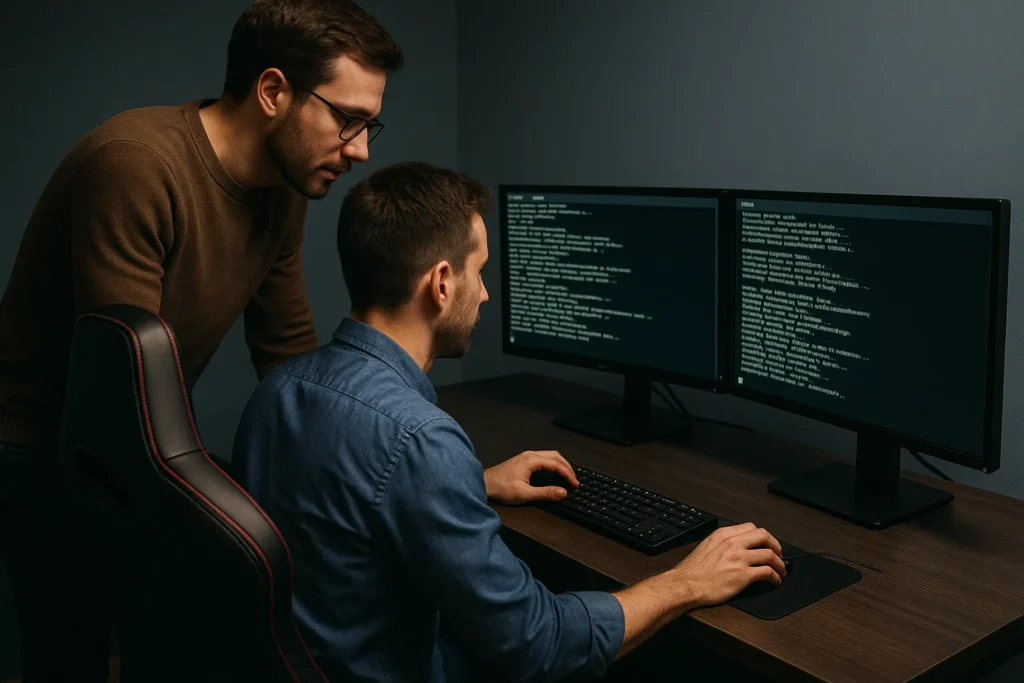You’ve just installed a new Linux distribution, opened the terminal, and now you’re staring at a blinking cursor. No buttons, no menu bar. Just a black screen that expects you to know what to type.
For many beginners, the command line interface feels intimidating and unfamiliar because they don’t have sufficient Linux basics.
But here’s the truth: the terminal is one of the most powerful tools in the Linux world. You might need to find your current working directory, move files between folders, or install a tool without opening a software centre.
Knowing just a handful of Linux commands can make these tasks faster, easier, and more efficient.
In this guide, we will walk through the top terminal commands every Linux user should master, explained in plain language with examples, use cases, and helpful explanations to make them stick.
You won’t just be copying and pasting commands, you will understand what they do and why they matter.
Why the Terminal Is Your Best Friend on Linux
If you’re new to Linux, why use the terminal at all when graphical tools are available? The answer is simple. The terminal gives you more control, more speed, and more insight into your system.
While desktop interfaces can be helpful, they often hide the inner workings of your machine. The terminal does not. It lays everything out clearly and efficiently. Once you start using Linux commands, you will discover that tasks like renaming files, managing software, or checking system info can be done in seconds with just a few keystrokes.
Even better, many advanced tools are only accessible through the terminal. You might be managing a Linux system, editing configuration files, or writing your first shell scripts. In all of these tasks, the command line is your most versatile and efficient tool. Think of it as a superpower. The more you use it, the stronger your skills become.

Start with Where You Are: PWD, LS, and CD
One of the first hurdles Linux newcomers face is navigating the terminal. Without icons or windows, it can feel like wandering through the woods without a map unless you know these essential tools.
- pwd (Print Working Directory): This Linux command shows your current working directory, telling you exactly where you are in the file system.
- ls: Like peeking inside a drawer, the ls command lists the contents of your working directory. Add options like -l or -h for more readable output.
- cd: The cd command lets you travel between directories. cd Documents takes you to your Documents folder, while cd .. goes up a level.
To understand what system you are working with, the uname command reveals key Linux system details. These tools are not just useful, they are foundational as well.
With a few commands, the terminal becomes less mysterious and more like a well-organised toolbox.
Files, Folders, and Power Moves: CP, MV, RM, and CHOWN
Once you understand how to navigate, the next step is learning to control your files and directories. This is where the Linux terminal begins to be useful. Forget dragging and dropping. With a few keystrokes, you can copy, move, or rename files with speed and precision.
Want to move a file from your Downloads to the Documents folder? The mv command does just that. It can also rename a file by simply specifying a new name as the second argument.
Need a backup of an existing file before editing? Use the cp command to duplicate it. And when it is time to tidy up, the rm command will delete unwanted files. Just be cautious, because there is no undo button here.
Sometimes you will hit a roadblock: “Permission denied.” That is where the chown command and file permissions come in. These tools help you manage access, especially when working with shared folders or administrative files in the Linux system.
If you are new to file permissions and ownership, this LinuxPermissions.com guide offers a solid explanation.
Using these commands transforms the terminal from a black box into a powerful workspace for managing your file system with confidence.
Look Before You Leap: CAT, HEAD, TAIL, and SORT
Before you edit or delete anything, it is smart to take a quick look at the contents of a file. Linux offers several tools that let you read data directly in the terminal without opening an editor.
The cat command is your go-to for quickly viewing the full contents of a text file. If you only need to see the beginning, try the head command. At the end of a file, use tail. These are especially helpful for reviewing system logs or tracking errors in real-time. For example, tail -f /var/log/syslog will show a live feed of your system logs.
The sort command organises lines in a file, making it easier to process lists or find duplicates. Combined with other tools, these commands become part of a powerful toolkit for file review and data analysis. For more on using sort, the GNU manual entry is a great reference.
When you’re scanning logs, checking code output or reviewing system reports, these commands give you the clarity and control needed to make quick decisions.
When in Doubt, MAN It Out
No one expects you to memorise every Linux command. That is what the man command is for. Short for “manual”, man shows the built-in documentation for any command installed on your system.
Need help with the grep command? Just type man grep and you will get a full breakdown of what it does, what options it supports, and examples of how to use it. Within the manual, you can search for specific keywords using the forward slash /.
Many commands also support the –help flag, which offers a summary. This is especially useful when you want a quick reference without diving into full documentation. For example, try sort –help or rm –help.
To get more comfortable reading and using man pages, this TLDP.org guide includes a great intro on navigating manual content.
Remember, using the manual is not a sign of weakness. It is how experienced users troubleshoot and explore command options efficiently.
Setting Passwords and Managing Access: PASSWD and SUDO
Security and access control are essential parts of working in any Linux system. Two of the most useful commands to know when managing users and their permissions are passwd and sudo.
The passwd command allows users to change their passwords from the terminal. Simply run passwd, and you’ll be prompted to enter and confirm a new password. If you are managing other user accounts, you can specify the username as an argument, for example: sudo passwd username.
Speaking of sudo, it stands for “superuser do”. This command temporarily gives you administrative privileges to perform actions that would otherwise be restricted. Be cautious, though, with great power comes great responsibility. One wrong command as the root user can cause system-wide changes or deletions.
Pro Tip: Always double-check commands that require sudo.
To learn more about safe sudo usage, check out this Ubuntu guide on root and sudo.

Install Software Without a GUI? Yep, It’s Easy
Installing new applications in Linux doesn’t require a software centre. In fact, using the terminal is often faster and more reliable. Most Linux distributions include a package manager, which is used to download, install, and update software packages.
For Debian-based systems like Ubuntu, the command sudo apt install package-name is used. On Red Hat-based systems, you might use dnf or yum instead. Want to install curl or htop? Just run sudo apt install curl or sudo apt install htop.
You can also download software directly from the internet using the wget command. For example:
wget https://example.com/app.tar.gz
This grabs the file and saves it locally, ready for extraction or installation.
If you want a walkthrough on common tools to install, Linuxize offers a great step-by-step guide across different distributions.
The more familiar you get with your package manager, the easier it becomes to customise your Linux environment with tools you trust.
Put Your Knowledge to Work: Try This
Now that you know your way around the basics, the best thing you can do is start putting your new skills into practice. Here are a few ideas to help build muscle memory and confidence at the command line.
- Try replacing one GUI action you normally do, like creating folders or moving files, with its terminal version using mkdir, mv, or cp.
- Write a small script that backs up a directory using tar and cp. You can learn more about scripting basics from the GNU Bash Guide.
- Explore what users and processes are running with whoami, ps, and kill.
Build the habit of using the terminal a little each day. Over time, it becomes faster and more flexible than relying on a graphical interface. The more you experiment, the more confident and capable you become.
You’ve Got the Power, Now Keep Going
You’ve just taken a major step toward mastering the command lines that power every Linux system. What once looked like a blinking cursor of doom now feels like a launchpad for productivity. By learning these basic commands, you have opened the door to deeper control, faster workflows, and the possibility of exploring Linux system administration in the future.

You might be adjusting system settings, organising files, or experimenting with your first shell scripts. These small steps build real confidence with the command line.
Keep this guide handy as you continue exploring. Each time you solve a problem using your terminal, you gain more control. Each win is another reason to keep going.
If you are ready to learn more, we have practical tips, command guides, and tutorials waiting for you. Visit basiclinux.net to explore our latest how-tos and learning paths. Your Linux journey has only just begun, and we are here to support you every step of the way.
